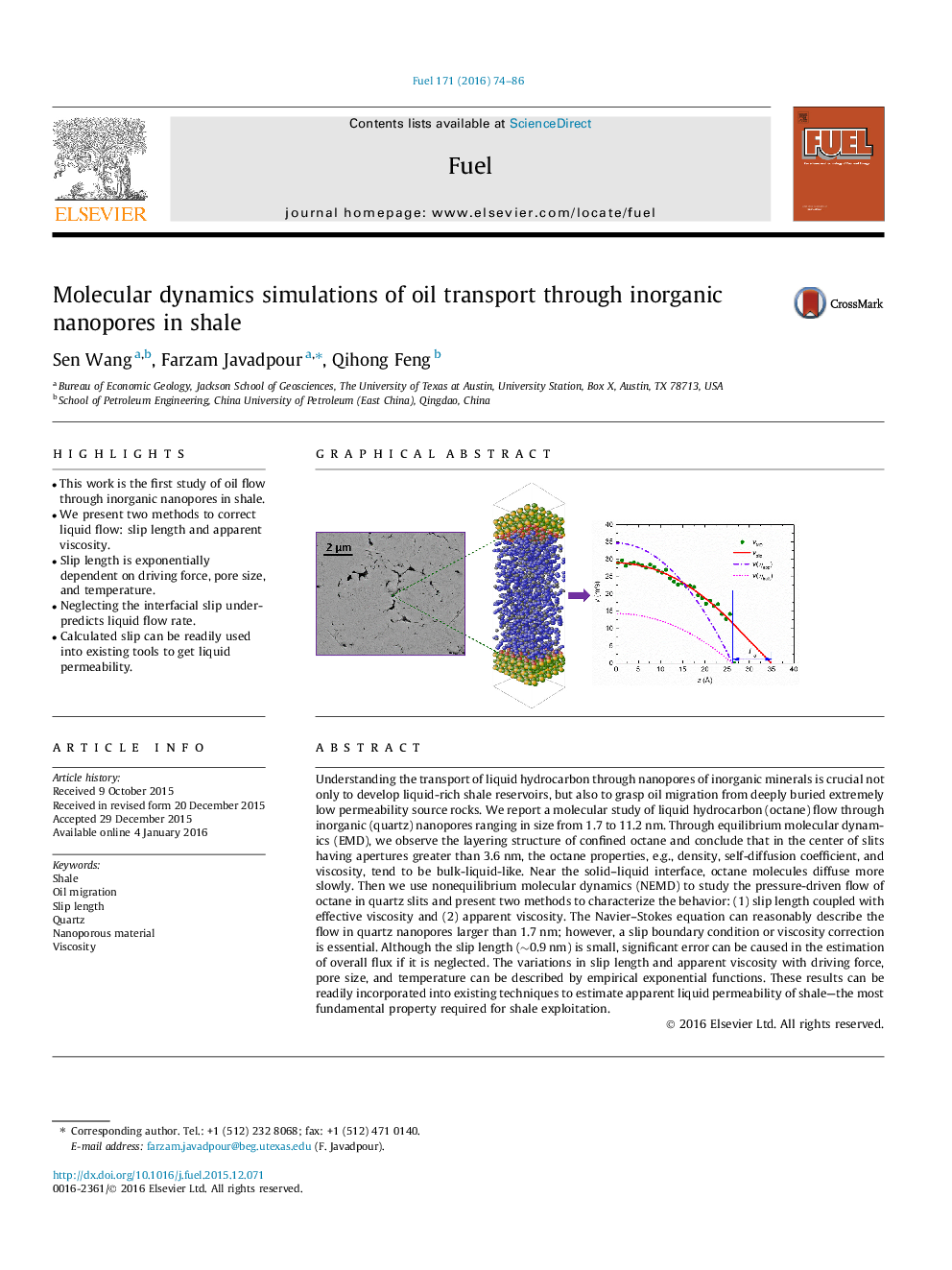| کد مقاله | کد نشریه | سال انتشار | مقاله انگلیسی | نسخه تمام متن |
|---|---|---|---|---|
| 205258 | 461102 | 2016 | 13 صفحه PDF | دانلود رایگان |
• This work is the first study of oil flow through inorganic nanopores in shale.
• We present two methods to correct liquid flow: slip length and apparent viscosity.
• Slip length is exponentially dependent on driving force, pore size, and temperature.
• Neglecting the interfacial slip under-predicts liquid flow rate.
• Calculated slip can be readily used into existing tools to get liquid permeability.
Understanding the transport of liquid hydrocarbon through nanopores of inorganic minerals is crucial not only to develop liquid-rich shale reservoirs, but also to grasp oil migration from deeply buried extremely low permeability source rocks. We report a molecular study of liquid hydrocarbon (octane) flow through inorganic (quartz) nanopores ranging in size from 1.7 to 11.2 nm. Through equilibrium molecular dynamics (EMD), we observe the layering structure of confined octane and conclude that in the center of slits having apertures greater than 3.6 nm, the octane properties, e.g., density, self-diffusion coefficient, and viscosity, tend to be bulk-liquid-like. Near the solid–liquid interface, octane molecules diffuse more slowly. Then we use nonequilibrium molecular dynamics (NEMD) to study the pressure-driven flow of octane in quartz slits and present two methods to characterize the behavior: (1) slip length coupled with effective viscosity and (2) apparent viscosity. The Navier–Stokes equation can reasonably describe the flow in quartz nanopores larger than 1.7 nm; however, a slip boundary condition or viscosity correction is essential. Although the slip length (∼0.9 nm) is small, significant error can be caused in the estimation of overall flux if it is neglected. The variations in slip length and apparent viscosity with driving force, pore size, and temperature can be described by empirical exponential functions. These results can be readily incorporated into existing techniques to estimate apparent liquid permeability of shale—the most fundamental property required for shale exploitation.
Figure optionsDownload as PowerPoint slide
Journal: Fuel - Volume 171, 1 May 2016, Pages 74–86
